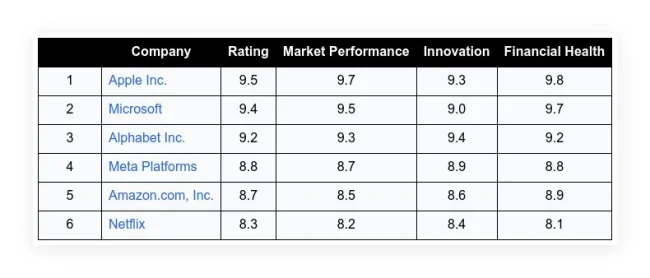Managing money is one of the most important skills you can learn. The ability to properly earn, distribute, save, and spend money can be a major factor that impacts how a person’s life plays out.
While money is often seen as an activity for grown-ups, it’s never too early to make the necessary investments to help prepare your child for financial success in the future. This includes teaching and investing in them, both directly and indirectly.
Here are some of the best investments you can make for your child to set them up for future financial success. We’ll start with a few more subtle and indirect (though still critical) investment options and then run through some of the best ways to stockpile wealth directly for the next generation.
Table of Contents
Toggle1. Teach Your Kids to Handle Money Early On
This may not feel like an investment so much as a lesson, but teaching your kids how to handle money pays off in the long run. When a child knows how to run a budget, keep track of expenses, or use a credit card wisely, it is a powerful tool that will serve them throughout their lives.
Taking the time to invest in teaching a child about money is akin to the old mantra to “teach a man to fish” rather than simply giving them the fish in the first place. U.S. News points out that teaching financial literacy can generate dividends by teaching:
- The time value of money.
- Delayed gratification.
- The development of deeper socio-economic awareness.
- Confidence to buy a home, save for retirement, and even start businesses.
The other way teaching a firm financial literacy foundation pays off is by making the other recommendations on this list more effective. The responsibility of getting the most out of things like choosing the right college path or funding a UGMA account (both of which are explained further down) ultimately falls on your child. Equipping them with the knowledge required to take advantage of financial investments created in their name is ground zero for sustainable success.
2. Create Savings Funds Together
One of the most effective ways to invest in your child’s financial future is to include them in the process. Invite them to build wealth alongside you. Look for ways to set up savings vehicles that you can contribute to at the same time. A few traditional options include:
- Savings Accounts: These are basic bank accounts where you can securely deposit and store money for your child when they’re older. They usually boast better (although rarely excellent) interest rates that are, at the least, better than a standard checking account.
- Savings Bonds: These are bonds that represent a personal loan to the government to be paid back at a future date with interest. There are multiple kinds of bonds to choose from.
- CDs: Certificates of Deposit, or “CDs,” are a savings option in which you lend money to a bank on the assumption that you will receive it with interest at a specific future date and no sooner. This makes them ideal for children who won’t use the money for a decade or more.
Regardless of the kind of savings vehicle you use, saving together is a great way to encourage healthy behaviors in your kids while also setting them up for a head start, financially speaking. Matching your children’s contributions is a particularly powerful incentive.
3. Let Your Kids Make Money Management Mistakes
Making mistakes is one of the most powerful ways to learn. It’s also an indirect investment in their future financial success — even if it’s a difficult one to see play out in real-time.
As a parent, it’s tempting to protect your child from the repercussions of their choices. However, natural consequences are a concrete parenting option that can teach children the realities of wealth management before they handle larger sums of money.
For example, if a child wants to use some of their money to buy a toy that you know they won’t want to play with, let them do it. Then, talk through the decision with them as they realize that they wasted resources on an impulse purchase because it looked attractive at the moment.
Again, this is a subtle investment and one that takes purposefulness and consistency on the part of parents. But it factors into that “teach a man to fish” mentality. If you don’t teach by allowing your child to make mistakes, how will they be able to make big decisions when they become adults and have larger resources to work with — including your own investments you’ve provided for them?
4. Hire a College Admissions Consultant Early
When your child enters high school, one of the first things they’ll need to begin considering is their goals for higher education. Getting into more-highly ranked colleges will help a student’s path to financial success. The earlier a teen can start thinking about their academic and career interests, the more it helps with college admissions and internship preparedness.
It’s wise to help your child prepare for their college career ahead of time and even as early in high school as possible. Given how substantial the investment is for college, having a good college admissions consultant will help students navigate high school so they can build the best resume and narrative for college admissions. Working with a good college admissions consultant is a good idea because they can help students with study skills, gain experiences they wouldn’t normally have thought of on their own, gain leadership skills and think through their areas of academic and career interest. The consultants at Spark Admissions, for instance, have an admissions rate that is 6x the national average at many of the top-50 colleges.
If you do opt to work with a college admissions consultant, don’t wait until the last minute, either. Connect while your child is early in their high school years. That way, your consultant has time to guide your teen to uncover and best-position a student’s ambitions, strengths, interests, and skills and can help align these with the right academic options.
5. Open a 529 Plan or Coverdell Savings Account
When it comes to directly saving cash for your child to have when they’re older, especially to offset those significant college expenses, one of the best options is a 529 Plan. This is named after the correlating section of the tax code, and it is a tax-friendly way to cover academic expenses.
There are multiple forms of 529 plans, including pre-paid tuition (i.e., locking in today’s rates for a later attendance date). You can also set up an education savings plan, which grows tax-deferred and can be tax-free when used on qualifying educational expenses.
Another option is an Educational IRA, also known as a Coverdell Education Savings Account or Coverdell ESA. This is a similarly academically-focused savings plan. Parents and children alike can save for college (post-tax). Once in the account, earnings are tax-free until distribution. If they are spent on qualifying expenses, they remain tax-free, too.
6. Create a UGMA or UTMA Gift and Custodial Roth IRAs
While helping with college expenses is a great start, it isn’t the end-all of life’s expenses. If parents want to help their kids beyond the walls of their college classrooms, they can set up a custodial account. The Uniform Gifts to Minors Act (UGMA) and Uniform Transfers to Minors Act (UTMA) are two popular options that make this possible.
These are flexible savings accounts that parents or guardians can set up for their children. The former allows minors to own assets that are legally managed by an adult custodian. The latter is an asset (such as real estate, royalties, fine art, or cold, hard cash) that a custodian manages until it transfers directly to a minor when they reach a certain age (usually 18 or 21).
In either case, this is a great way to transfer wealth to a child without paying significant taxes in the process. However, it’s worth noting that the process is irrevocable. Once the child comes of age, they have full access to and control of the account. This is why the first few tips on this list are so vital to helping perpetuate a child’s success over time.
Finally, it’s worth mentioning a custodial Roth IRA. These are retirement accounts that minors can own. But, a custodian will need to fund and manage these accounts until the child comes of age. This is a great way to help give your child a jump start on a long and prosperous retirement savings journey.
Helping Set Your Kids Up for Financial Success
From teaching healthy money management to saving money together and letting them make mistakes, there are many ways to cultivate financial literacy and healthy habits in your kids that will serve them throughout their lives. In addition, using tools like a 529 plan for college, UGMA and UTMA gifts for everyday life, and custodial Roth IRAs for long-term retirement savings can give your kids a foundation of wealth to build on from the get-go.
As you consider where and how to make investments for the next generation’s financial success, remember to take their own thoughts, interests, and opinions into account, too. What are your child’s long-term goals? Do they have passions and interests that are worth integrating into your financial investment activities? Keep them in the loop as you build a healthy financial future together side by side.
[Related: Cash Investments Underperform in 2023]
Featured Image Credit: Photo by Cottonbro Studio; Pexels; Thank you.
















